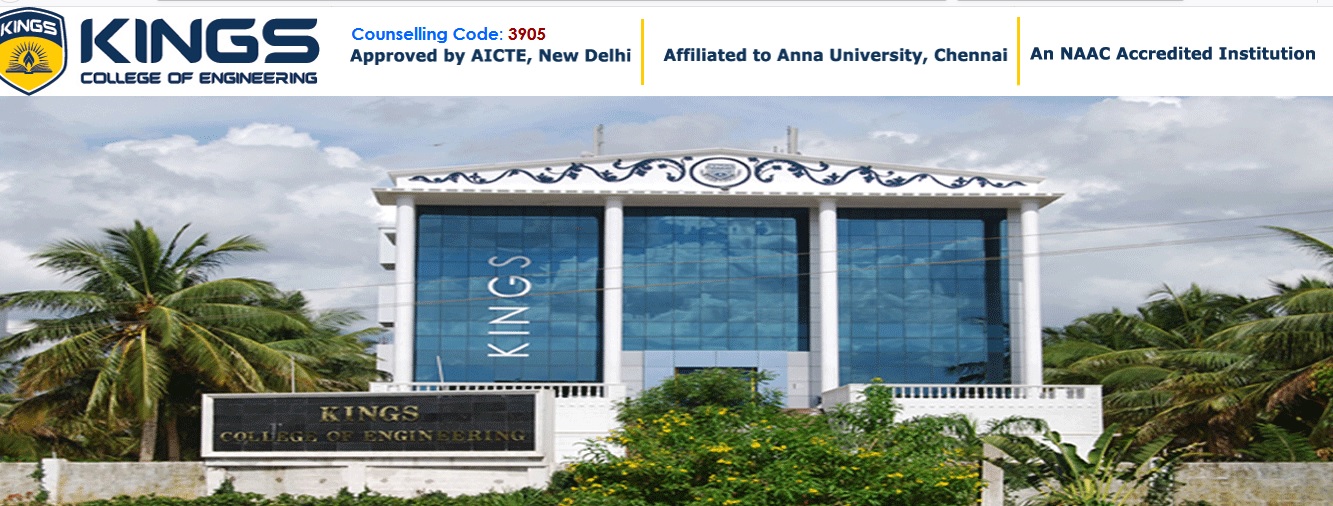EE2255 Digital Logic Circuits Question Bank : kings.ac.in
Name of the College : Kings College Of Engineering
Department : Electrical & Electronics Engineering
Subject : Digital Logic Circuits
Website : kings.ac.in
Document Type : Question Bank
Download Model/Sample Question Paper : https://www.pdfquestion.in/uploads/ki…20CIRCUITS.pdf
Kings Digital Logic Circuits Question Paper
Unit I
Boolean Algebra And Combinational Circuits :
Part-A :(2 MARKS)
1. Define binary logic?
2. What are the basic digital logic gates?
3. What is a Logic gate?
4. Give the classification of logic families.
Related / Similar Question Bank :
Kings College Mechanical Engineering Question BankStrength of Materials
Manufacturing Technology
Heat & Mass Transfer
Engineering Materials & Metallurgy
Electronics & Microprocessors
Power Plant Engineering
Electrical Machines
5. Which gates are called as the universal gates? What are its advantages?
6. Classify the logic family by operation?
7. Mention the important characteristics of digital IC’s?
8. Define Fan-out?
9. Define power dissipation?
10. What is propagation delay?

11. Define noise margin?
12. Define fan in?
13. What is Operating temperature?
14. What is High Threshold Logic?
15. Define combinational logic
16. Explain the design procedure for combinational circuits
17. Define Half adder and full adder
18. Define Decoder?
19. What is binary decoder?
20. Define Encoder?
21. What is priority Encoder?
22. Define multiplexer?
23. What do you mean by comparator
Unit –II
Synchronous Sequential Sircuits :
Part-A :(2 MARKS)
1. What are the classification of sequential circuits?
2. Define Flip flop.
3. What are the different types of flip-flop?
4. What is the operation of D flip-flop?
5. What is the operation of JK flip-flop?
6. What is the operation of T flip-flop?
7. Define race around condition.
8. What is edge-triggered flip-flop?
9. What is a master-slave flip-flop?
10. Define rise time.
11. Define fall time.
12. Define skew and clock skew.
13. Define setup time.
14. Define hold time.
15. Define propagation delay.
16. Define registers.
17. Define sequential circuit?
18. Give the comparison between combinational circuits and sequential circuits.
19. What do you mean by present state?
20. What do you mean by next state?
21. State the types of sequential circuits?
22. Define synchronous sequential circuit
Unit III
Asynchronous Sequential Circuit :
Part-A : (2 MARKS)
1. Define Asynchronous sequential circuit?
2. Give the comparison between synchronous & Asynchronous sequential circuits?
3. The following wave forms are applied to the inputs of SR latch. Determine the Q waveform Assume initially Q = 1
4. What is race around condition?
5. Give the comparison between synchronous & Asynchronous counters.
6. The t pd for each flip-flop is 50 ns. Determine the maximum operating frequency for MOD – 32 ripple counter
7. What are secondary variables?
8. What are excitation variables?
9. What is fundamental mode sequential circuit?
10. What are pulse mode circuit?
11. What are the significance of state assignment?
12. When do race condition occur?
13. What is non critical race?
14. What is critical race?
15. When does a cycle occur?
16. What are the different techniques used in state assignment?
17. What are the steps for the design of asynchronous sequential circuit?
18. What is hazard?
19. What is static 1 hazard?
20. What is static 0 hazard?
21. What is dynamic hazard?
22. What is the cause for essential hazards?
23. What is flow table?
24. What is primitive flow chart?
25. What is combinational circuit?
26. Define merger graph.
27. Define closed covering.
28. Define state table.
29. Define total state
30. What are the steps for the design of asynchronous sequential circuit?
31. Define primitive flow table.
32. What are the types of asynchronous circuits?
33. Give the comparison between state Assignment Synchronous circuit and state assignment asynchronous circuit.
34. What are races?
35. Define non critical race.
36. Define critical race?
37. What is a cycle?
38. Write a short note on fundamental mode asynchronous circuit.
39. Write a short note on pulse mode circuit.
40. Define secondary variables.
41. Define flow table in asynchronous sequential circuit.
42. What is fundamental mode.
43. Write short note on shared row state assignment.
44. Write short note on one hot state assignment.
45. A pulse mode asynchronous machine has two inputs. If produces an output whenever two consecutive pulses occur on one input line only. The output remains at 1 until a pulse has occurred on the other input line. Write down the state table for the machine.
Unit-IV
Programmable Logic Devics ,Memory And Logic Families :
Part-A :(2 MARKS)
1. Mention the classification of saturated bipolar logic families.
2. Explain ROM
3. What are the types of TTL logic?
4. Define address and word.
5. What is programmable logic array? How it differs from ROM?
6. Explain EPROM.
7. Give the classification of PLD’s.
8. Define PROM.
9. Define PLA
10. Define PAL
11. Why was PAL developed ?
12. Why the input variables to a PAL are buffered
13. What does PAL 10L8 specify ?
14. Give the comparison between PROM and PLA.
15. What is mask – programmable?
16. What is field programmable logic array?
17. State advantages and disadvantages of TTL
I need sample question paper.